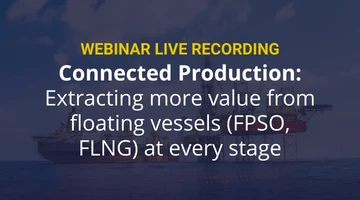German LNG - a good example?
Big schemes, ambitious beginnings
Add bookmarkGerman LNG: the Brunsbüttel example
The German port town of Brunsbüttel saw major development in 2016 with the construction of a large LNG import terminal. Part of a scheme to phase out Germany’s reliance on nuclear energy to almost zero by 2022 (from 250 TWh), Vopak, which manages 300 facilities across the globe, in collaboration with Gasunie, operating in both Germany and the Netherlands, and Oiltanking, with 80 terminals worldwide, are operating a vast swathe of LNG infrastructure.
“So far, permits have been granted, but we are doing everything for the first time, and the integrated concept of LNG brings a lot of questions from the regulatory side, and hopefully that will be completed within a year. We have a building permit, and an environmental permit – basically, the whole package.”
Guus Vogels, Sales Manager, Vopak
23 per cent of the German market currently relies on renewable energy, with the same proportion dependent on nuclear energy. German LNG therefore has the potential for a huge share of the market in the next few years. Germany also depends on 836 TWh of energy produced from coal, so major shifts in energy make-up are needed.
Location, location, location
Brunsbüttel is the preferred location for an LNG terminal due to its proximity to a number of important features, including the port of Hamburg, its surrounding industrial zone, and the Kiel Canal – the busiest artificial waterway in the world, with 113 ships passing along it every day. There is also scope to promote LNG as a fuel for trucks, as Germany currently has three million diesel trucks in its road fleet. The local government both within the port of Brunsbüttel and the state of Schleswig-Holstein fully support these schemes, along with some tentative steps towards full rail linkages.
“Our companies look at both small and large scale terminals, and what we saw was that building of infrastructure is always a barrier, especially for facilities working with smaller volumes. We want to build a concept that gets the best of both worlds, where other companies are able to bring larger volumes to north west Europe.”
Guus Vogels, Sales Manager, Vopak
The site has direct access to areas covered by both Gaspool and NCG, which are due to merge next year. The link to this low/high pressure gas grid allows access to the local industry in order to evacuate boil off.
Vopak’s grand plans
Speaking at the recent LNG Bunkering Summit in Amsterdam, Guus Vogels of Vopak described plans for a modular structure of LNG services, including the loading and unloading of LNG, storage, regasification, and distribution to trucks and barges – as well as small and medium vessels. Mr Vogels stressed that this would be a multiple-user terminal with open access under an independent terminal operator.
“We don’t have any influence on the sourcing, we need to obey the law and get into the grid based on specs from our customers. We do have a ban on fracking LNG from the US in Germany, but if you look at the entire world LNG portfolio – LNG from the US is a small part of that, so therefore I think we shouldn’t exclude it from the terminal but it is still up to our customers to make that decision.”
Guus Vogels, Sales Manager, Vopak
There is also an expectation that the terminal will adhere to a configuration featuring two large 240,000 cubic metre tanks, a large-scale jetty for (you guessed it) larger vessels, as well as a dedicated smaller one. Two truck loading bays will also be complemented by two rail car loading bays, an exciting development given that only five such facilities exist at the start of 2019.
“There was a restraint on jetties. If we wanted to facilitate larger vessels, we would need at least one large jetty – but if we built two, then the cost would be higher. It was a little bit of a choice looking at the space available, and the space allowed us to have a larger and a smaller jetty and on balance, we thought this was worth it.”
Guus Vogels, Sales Manager, Vopak
This layout is forecasted to handle around five billion cubic metres of LNG per year, with an option to scale up to seven over the next few years. The combined unloading rate of the jetties will be around 14,000 cubic metres per hour, and the loading rate is expected to exceed 2,500 m3 per hour. Again, there will be the opportunity for further expansion.
[inlinead]
The project began in 2018, and operations are expected to begin in mid-2022, with a final investment decision in 2020. Discussions are underway with companies wanting LNG from the terminal, and agreements with LNG suppliers have begun.
For more on this topic, make sure to check out our upcoming LNG report.







